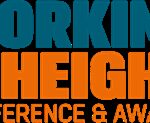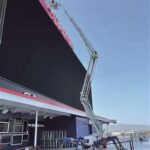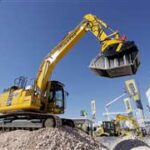You’re on a job site staring at two machines—both are blue, both lift people into the air, and both look vaguely like mechanical giraffes. One moves like a crane, the other like a rising toaster.
Which one do you need?
Welcome to the ultimate showdown: Boom Lift vs. Scissor Lift.
Let’s break it down. No jargon, no tech manual—just the facts (and a little fun).
📏 The Elevator vs. The Arm
🔹 Scissor Lift
Goes straight up.
Picture an accordion that lifts you vertically. It’s stable, simple, and mostly indoor-friendly.
🔸 Boom Lift
Goes up, out, and around.
Think of a mechanical arm with a basket on the end—it bends, reaches, and maneuvers like a gymnast on a mission.
⚙️ Key Differences at a Glance
| Feature | Scissor Lift | Boom Lift |
|---|---|---|
| Lift Direction | Vertical only | Vertical + Horizontal |
| Reach | Limited to height above base | Can extend outward (over obstacles) |
| Footprint | Wider, more compact | Can be narrow but needs swing room |
| Height Range | Typically up to 40 ft | Can go over 180 ft on larger units |
| Platform Size | Wider, fits multiple workers/tools | Usually smaller basket (1–2 people) |
| Best For | Indoor maintenance, low-ceiling jobs | Outdoor work, uneven terrain, tricky spots |
| Price Tag | Generally lower | Higher (but more versatile) |
🏢 Where You’d Use a Scissor Lift
Scissor lifts are indoor champs. You’ll often find them in:
-
Warehouses
-
Malls
-
Airports
-
Data centers
-
Schools & hospitals
They’re perfect for:
-
Ceiling work
-
HVAC installs
-
Electrical maintenance
-
Light-duty construction
-
Anyplace with flat floors and overhead access
They’re easy to operate, quick to deploy, and typically more budget-friendly.
🌲 Where a Boom Lift Rules
Boom lifts are outdoor warriors with long arms and serious flexibility.
You’ll see them on:
-
Construction sites
-
Stadium renovations
-
High-rise window cleaning
-
Tree trimming
-
Sign installations on uneven terrain
Because they can reach up and over, boom lifts are unbeatable when you need to clear obstacles—think rooftops, scaffolding, or large equipment.
💡 A Real-Life Example
Let’s say you’re:
-
Fixing a light fixture 20 feet above a warehouse aisle → Use a scissor lift
-
Installing signage on the side of a curved glass atrium roof → Hello, boom lift
It’s not just about how high—it’s about how complex the path to that height is.
🔋 Electric or Diesel?
Both machines come in:
-
Electric models for indoor, quiet, zero-emission work
-
Diesel models (mainly boom lifts) for rough outdoor sites with uneven terrain
Pro tip: If you’re indoors and value your lungs, go electric.
🛠️ Maintenance & Mobility
-
Scissor lifts usually require less maintenance and are easier to transport (lighter, smaller).
-
Boom lifts, though more complex, offer more value per reach if you need versatility.
And both can be towed, trailered, or rented by the day, week, or month.
🧠 So, Which One Should You Use?
Ask yourself:
-
Do I need to reach out, or just up?
-
Is the job indoors or outdoors?
-
How high is high?
-
What’s my budget?
-
Do I need mobility around obstacles?
If your work is straight up, stable, and spacious—scissor lift.
If you need to reach, stretch, or twist in midair—boom lift.
🏁 Final Verdict
-
Scissor lifts = lift platforms
-
Boom lifts = aerial acrobats
They’re both brilliant tools. The difference is in the job, the site, and your reach.
Choose wisely.
Because in the world of aerial access, the right machine isn’t just a tool—it’s the difference between “done” and “doing it again tomorrow.”




